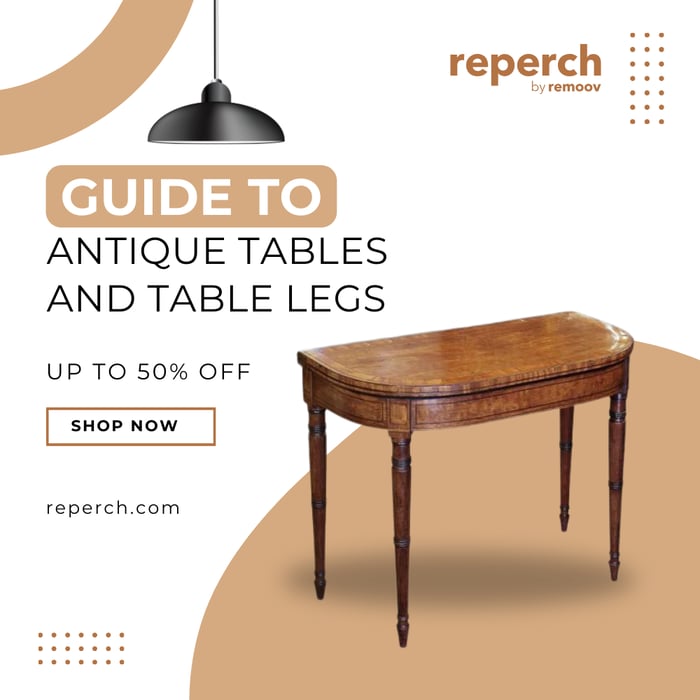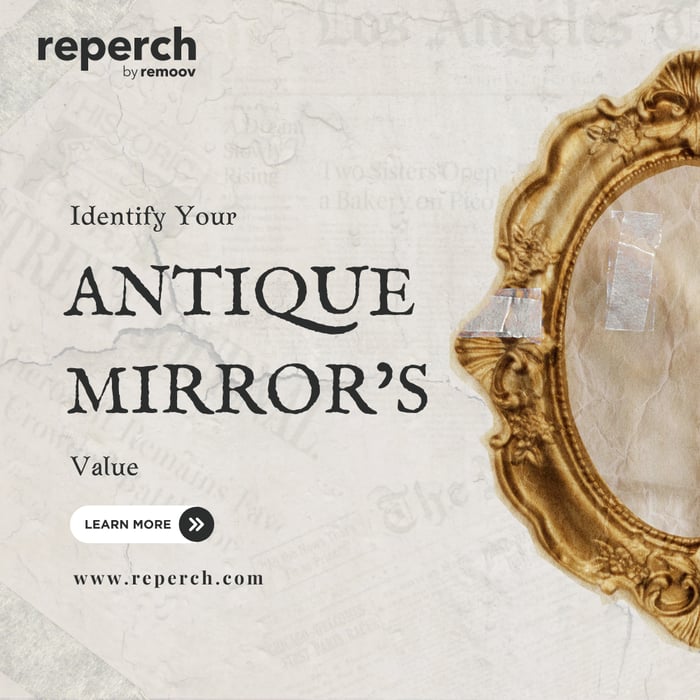Antique tables offer a glimpse into history with their unique designs and craftsmanship. Identifying these pieces involves examining their legs, joinery, and materials. This guide will help you recognize various styles and determine the age and authenticity of antique tables and their legs.
Identifying Antique Table Legs
1. Fluted Legs
Fluted legs, inspired by Greek architecture, feature vertical grooves. They are common on 19th-century mahogany tables; they reflect the Hepplewhite style and add a neoclassical touch.
2. Cabriole Legs
Cabriole legs have a distinct "S" shape, with outward knees and inward ankles. As seen in Chippendale furniture, they often end in ball-and-claw or pad feet, popular in 18th-century designs.
3. Marlborough Legs
Straight and simple, Marlborough legs are a hallmark of Georgian furniture from the late 18th century. They blend effortlessly into contemporary interiors.
4. Reeded Legs
Reeded legs, akin to fluted legs, feature convex grooves and commonly appear in early 19th-century Regency and Sheraton-style furniture.
5. Flemish Scroll Legs
These legs feature elegant scrolls that often spiral in opposite directions, adding a touch of late Baroque elegance. King Charles II's personal furniture designer, Gerrit Jensen, popularized them.
6. Spider Legs
Spider legs are thin and curved, resembling a spider's limbs. Used in 19th-century consoles and wine tables, their lightweight design made them portable and practical.
7. Spiral Legs
These, also known as barley twist legs, originated in India and became popular in Europe during the Restoration period. They add a dynamic and sturdy element to furniture.
8. Saber Legs
Saber legs, named after their resemblance to a fencing sword, have square-edged, splayed shapes. They are among the oldest leg styles, seen in ancient stools and later in American Empire furniture.
9. Trumpet Legs
Trumpet legs feature a large, domed top that tapers downward, resembling an inverted trumpet. They are sturdy and frequently found on 17th-century dining tables.
Identifying Antique Tables by Shape and Style
1. Trestle Tables
Trestle tables, dating back to the Middle Ages, feature slanted legs that support 'T' or 'V'-shaped trestles. They were common in monasteries and great halls.
2. Gate-Leg Tables
These tables, which originated in the late 1600s, feature pivoted leg supports that swing open like gates to support drop leaves. They are perfect for smaller spaces and intimate dining.
3. Drop-Leaf Tables
Featuring fixed centers and hinged leaves that drop down, these tables were popular in the 18th century and are known for their versatility.
4. Pembroke Tables
These small, light tables from the 18th century have central drawers and side leaves supported by brackets. Named after the Earl of Pembroke, they are ideal for multi-functional use.
5. Demilune Tables
Demilune tables, shaped like a half-moon, fit against a wall. Popular in 18th-century France, they add elegance to narrow hallways and entryways.
6. Console Tables
Designed to rest against a wall, these tables frequently showcase elaborate decorations. They were a staple of 18th-century French interiors, blending functionality with artistry.
7. Guéridon Tables
Small, round tables supported by a single column often feature decorative elements. 17th-century France introduced them and used them to hold candelabras or vases.
8. Pedestal Tables
Supported by a single central column, pedestal tables come in various shapes and sizes. They became popular in the late 18th century and are known for their stability and elegance.
9. Tea Tables
Originating in England, tea tables are small and sturdy, used for serving tea. They frequently featured decorative tops and were a central part of 18th-century social rituals.
10. Pie-Crust Tables
These small, round tables have a raised, scalloped edge resembling a pie crust. They often feature a tilt-top design.
Tips for Identifying Antique Tables
1. Examine the Wood
Oak, mahogany, walnut, or cherry are common materials used to make antique tables. The type of wood can help date the piece, with oak being common before 1700 and mahogany and walnut popular afterwards.
2. Check the Joinery
Handmade dovetails, visible plane marks, and uneven components are evidence of pre-1860 craftsmanship. Machine-made pieces are more symmetrical and uniform.
3. Look for original Finishes
Antique finishes include shellac, oil, wax, and milk paint. The mid-1800s saw the introduction of lacquer and varnish.
4. Assess Structural integrity.
Check for sturdy joints, even legs, and properly functioning doors and drawers. Significant repairs or missing parts can have an impact on the restoration's value and worth.
5. Verify Authenticity
Consult antique experts or use online resources to verify the age and authenticity of a piece. Be cautious of imitations and reproductions that may look similar to genuine antiques.
Conclusion
Identifying antique tables and table legs involves careful examination of design, craftsmanship, and materials. Understanding these elements allows you to appreciate the historical significance and value of these beautiful pieces. Whether you are a collector or simply an enthusiast, this knowledge will enhance your ability to identify and appreciate antique furniture.








